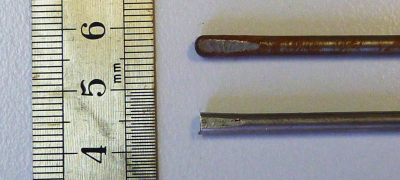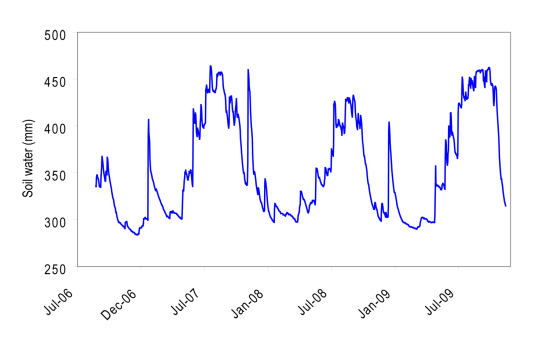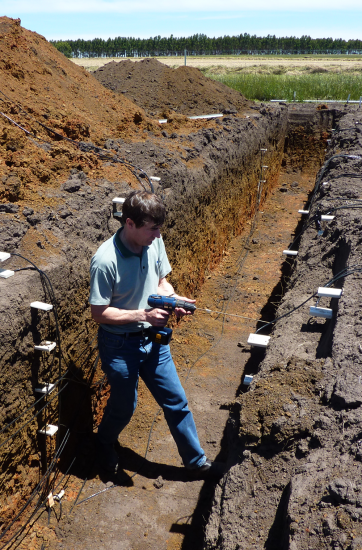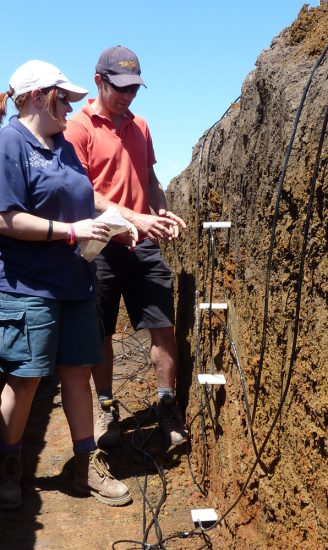DPI Victoria - Lateral Thinking & Good Old Fashioned Ingenuity Solves CS616 Probe Dilemma
Case Study: Dept of Primary Industries Hamilton Victoria

Aim
To measure soil moisture usage for a range of pasture systems. This is to develop pasture systems that are more efficient in their conversion of water to animal feed.
Project Description
Australia is the driest inhabited continent in the world. It is becoming increasingly important to use the water it does have in a more efficient manner. Malcolm McCaskill of DPI Hamilton designed a system to measure soil profile moisture and to correlate this data with growth measurements on 4 different adjacent pasture types. Due to labour requirements in measuring both growth and soil moisture, it was decided to install an automatic soil moisture logging system. A CR1000 was connected to 52 CS616 without the use of a multiplexer. This was achieved by having up to 4 sensors connected to each single ended input and controlling them from different control ports. The system was located at a point where 4 pasture systems intersect and the soil moisture data was recorded hourly and daily. The CS616 probes were temperature compensated using 107 thermistors.
The probes were placed in the soil profile at depths of 5cm, 15cm, 30cm, 50cm, 75cm, 100cm and 150cm. A backhoe was used to dig a trench so the probes could be inserted horizontally into undisturbed soil. The top probes in the profile could be easily inserted without assistance however, due to soil compaction, the lower probes in the profile needed assistance to insert without damage.
 The installers used a stainless steel welding rod with a flattened end on a hammer drill to drill pilot holes so the probes could be easily inserted and still have the snug fit required to get good contact with the soil. The data from this system was used in conjunction with neutron moisture meter (NMM) data. The NMM can measure soil moisture down to 5 metres but can’t measure in the top 10cm of the soil profile due to neutron escape. The NMM also take 2 days to make a measurement so the 2 systems complement each other well.
The installers used a stainless steel welding rod with a flattened end on a hammer drill to drill pilot holes so the probes could be easily inserted and still have the snug fit required to get good contact with the soil. The data from this system was used in conjunction with neutron moisture meter (NMM) data. The NMM can measure soil moisture down to 5 metres but can’t measure in the top 10cm of the soil profile due to neutron escape. The NMM also take 2 days to make a measurement so the 2 systems complement each other well.
This test site was close to Malcolm’s office so no telemetry was necessary. Malcolm was particularly happy with the fact that Campbell Scientific software was able to run on his 10 year old field laptop still running Windows 98™.

If you have soil moisture monitoring requirements, contact one of the Application Engineers at Campbell Scientific Australia to discuss your needs. We have many options including Time Domain Reflectometry, volumetric water content (VWC) based on dielectric permittivity (CS616) or we can measure VWC using cosmic ray neutron scattering, the latter particularly useful in high conductivity (saline) soils.

We're now on Facebook!
Stay informed with our latest updates by following Campbell Scientific Australia.
